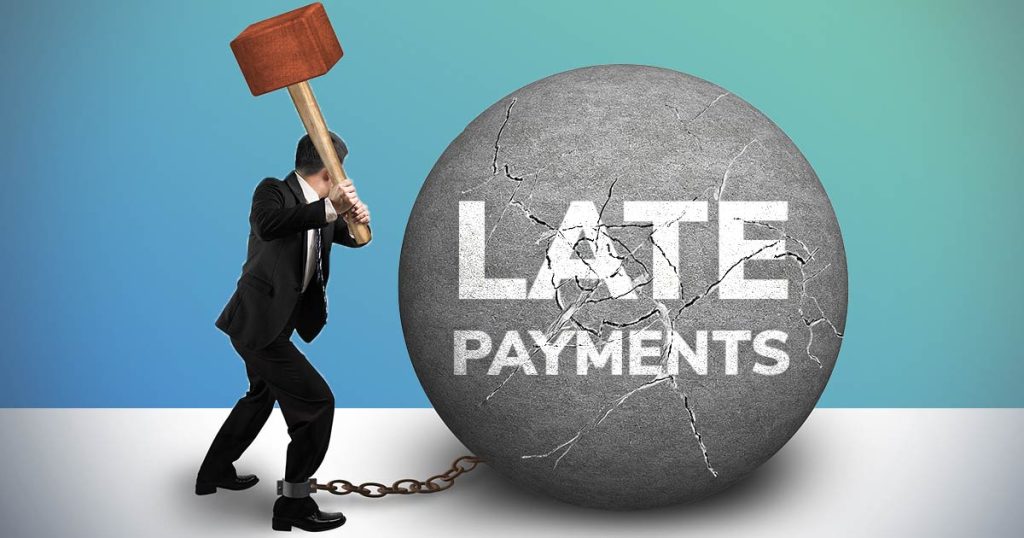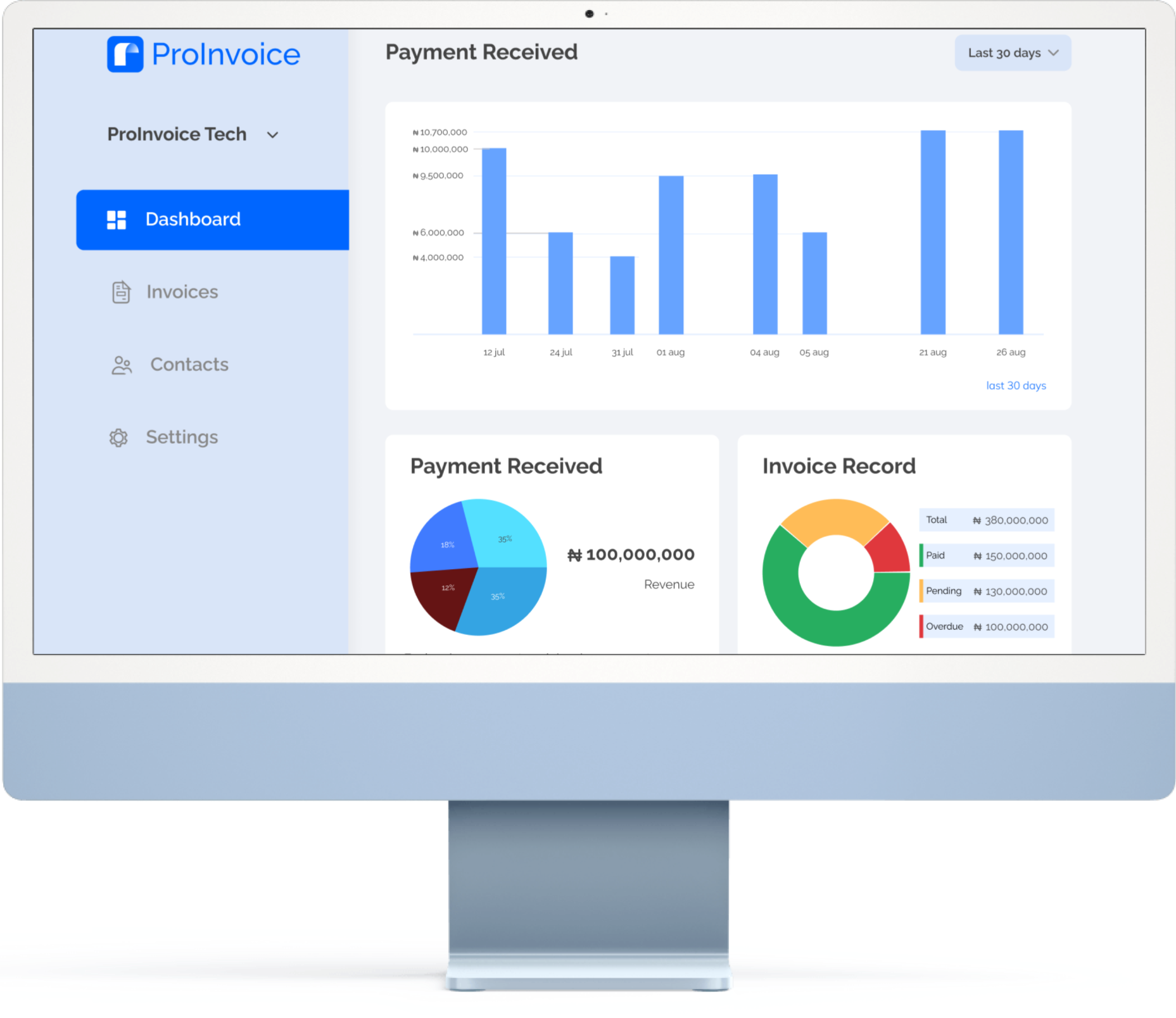1. Introduction
Late payments are a persistent challenge for businesses of all sizes, from startups to established enterprises. The ripple effects of customers paying late can erode cash flow, hamper decisions, increase administrative overhead, and threaten long‑term growth. In this article, we’ll explore the financial, operational, and strategic impact of late payments, share best practices to prevent them, and explain how ProInvoice can streamline your invoicing processes to ensure timely payments.
2. Understanding the Impact of Late Payments on Your Business
2.1 Disruption of Cash Flow Management
Cash flow is the lifeblood of any business. When clients pay invoices late, it disrupts your ability to cover recurring expenses like payroll, suppliers, rent, and utilities. Even a handful of consistently late payments can leave your cash flow projections inaccurate leading to liquidity shortfalls that might force expensive short‑term borrowing.
2.2 Increased Borrowing Costs
To meet operational needs amid delayed revenue, companies often rely on lines of credit or overdrafts. These facilities typically carry high interest rates and fees. The greater the reliance on borrowing, the higher the finance costs eroding profit margins unnecessarily.
2.3 Growth Inhibition
Without dependable incoming cash, investing in growth whether hiring new staff, launching marketing campaigns, or expanding product lines becomes risky. Late payments can stagnate your ambitions and inhibit scale‑up opportunities.
2.4 Impaired Supplier Relationships
You may delay payments to your own vendors due to client delinquency. This jeopardizes supplier trust and can result in disrupted supply chains, worse payment terms, diminished credit ratings, and strained professional relationships.
2.5 Elevated Administrative Workload
Chasing down delinquent invoices consumes significant administrative time from sending reminders and emails to answering client inquiries. These repetitive manual tasks distract your team from revenue‑generating or strategic activities.
2.6 Strained Client Relationships
While financial pressure may tempt you into aggressive collection tactics, this can damage customer goodwill. A combative or inconsistent payment process might reduce client retention and harm your reputation.
2.7 Increased Risk of Bad Debt
The longer an invoice remains unpaid, the higher the risk it becomes a write‑off. Bad‑debt expenses impact your financial statements, lower profitability, and potentially reduce your capacity to invest or secure new financing.
2.8 Negative Impact on KPIs and Financial Reporting.
Late payments distort key performance indicators (KPIs) like DSO (Days Sales Outstanding), receivables turnover, and free cash flow. Delayed payments create uncertainty in financial forecasting, reducing accuracy and weakening stakeholder confidence.
3. Key Drivers Behind Late Payments
Understanding why customers pay late is the first step in prevention.
3.1 Unclear or Disputed Invoice Details
Incomplete, inaccurate, or confusing invoices lead clients to delay payment until they fully understand or can dispute the charges.
3.2 Inefficient Billing Processes
Manual invoicing, disorganized billing systems, delayed delivery, or lack of reminders all contribute to late payments.
3.3 Misaligned Payment Terms
Inadequate payment terms such as inflexible Net 30 without early payment incentives can slow customer payments.
3.4 Weak Contracts and Policies
Without enforceable late‑payment penalties and escalation procedures within your agreements, you have little recourse or leverage.
3.5 Poor Visibility Over Receivables
Without a clear, real‑time overview of outstanding invoices, following up becomes reactive rather than strategic.
4. 10 Proven Strategies to Prevent Late Payments
4.1 Establish Clear Payment Terms
Include precise due dates, invoice numbers, descriptions, and payment channels. Set late‑fee penalties, interest rates, or discounts to encourage timely settlement.
4.2 Automate Invoicing and Reminders
Use billing software to auto‑generate and deliver invoices via email or portal. Schedule automated reminders (e.g., 7 days before, on due date, and subsequent follow‑ups).
4.3 Incentivize Early Payments
Offer a 1–2% discount for payments within 10 days (e.g., “2% 10, Net 30”). This encourages customers to pay faster and improves your liquidity.
4.4 Integrate Online Payment Options
Enable credit card or bank‑link payments directly from invoices to eliminate friction and reduce processing times.
4.5 Request Upfront Deposits or Retainers
For large or multi‑phase projects, collect a portion (e.g., 30–50%) before starting work. It safeguards against non‑payment and commits clients financially.
4.6 Perform Credit Checks
Screen clients for credit history and payment behavior before onboarding. Apply stricter payment terms for higher‑risk accounts.
4.7 Streamline Dispute Resolution
Include contact info and instructions directly on the invoice. Adopt a rapid resolution workflow so issues don’t delay payment for weeks.
4.8 Leverage Contractual Remedies
Contracts should specify late‑payment fees, interest on overdue balances, or rights to suspend service/product delivery.
4.9 Monitor Accounts Receivable Daily
Detect overdue invoices early and prioritize follow‑up based on outstanding balances and delinquency duration.
4.10 Outsource Collections When Necessary
For chronically late payers, consider external collection services or factoring firms—but only after exhausting direct, professional outreach.
5. Optimizing Cash Flow: Metrics to Track
To stay ahead of payment trends, monitor:
5.1 Days Sales Outstanding (DSO)
Average number of days to collect payment. A lower DSO signals strong credit control; industry benchmarks vary typically between 30–45 days.
5.2 Receivables Aging Breakdown
Track invoices by aging categories (current, 1–30, 31–60, 61+ days). Identify risk clusters and surface at‑risk accounts.
5.3 Collection Effectiveness
Compare collected amount vs invoiced amount. A high success rate demonstrates effective credit management.
5.4 Cash Conversion Cycle (CCC)
A measurement of how efficiently your business cycles cash through inventory, sales, and receivables. Late payments elongate CCC and reduce operational agility.
6. Role of Invoice Automation & Billing Software
Automation is a critical tool to reduce late payments. Here’s why:
6.1 Error‑Free Invoicing
Templates ensure every invoice contains complete, consistent data—minimizing confusion or disputes.
6.2 Scheduled Delivery & Reminders
Invoices are auto‑sent and reminders issued exactly when needed—no admin delays, no missed follow‑ups.
6.3 Integrated Payment Gateways
Clients can pay instantly via embedded links—cutting out manual redemption, processing, or reconciliation.
6.4 Real‑time Dashboards
Quickly review receivables at a glance—aging summary, outstanding amounts, payment trends, and alerts.
6.5 Reporting & Analytics
Generate insights on overdue patterns, customer payment behavior, and revenue risk—informing better credit decisions.
7. Common Objections and How to Overcome Them
7.1 “Software is too expensive.”
High-level automation saves time and cuts late‑payment costs. Choose scalable pricing often returns exceed upfront investment.
7.2 “My team already handles collections.”
Manual tasks drain time. Software frees up staff for sales and growth instead of chasing payments.
7.3 “Clients hate change.”
Introduce automated bills gently with clear guides and personalized notifications. Highlight that online payments help both parties.
7.4 “We handle disputes offline.”
Automated systems don’t block disputes they simply log them and track communication cadence making resolution smoother.
8. Case Study – How ProInvoice Solves These Problems
8.1 Real‑Time Dashboard
ProInvoice provides an intuitive receivables overview—see overdue accounts, total unpaid amounts, and aging data instantly.
8.2 Fully Automated Invoicing & Reminders
Create and schedule invoices and reminders in seconds. Send SMS or email alerts automatically based on built-in rules.
9. Conclusion
Late payments pose one of the most significant non‑cash barriers for businesses. They ripple outward—impairing cash flow, raising costs, hampering growth, and burying teams under administrative burden. But these outcomes aren’t inevitable. By adopting industry‑standard practices like clear invoicing, payment terms, automation, upfront deposits, and efficient dispute workflows, you can greatly reduce DSO, minimize bad debt, and sustain healthy cash flow.
And when you use a smart invoice automation tool like ProInvoice, you amplify all these strategies: accurate billing, timely reminders, integrated payment gateways, late‑fee enforcement, dashboard visibility, and client self‑service all in one place.
Take control of your cash flow now—visit proinvoice.co and transform how you bill, get paid, and grow with confidence.













